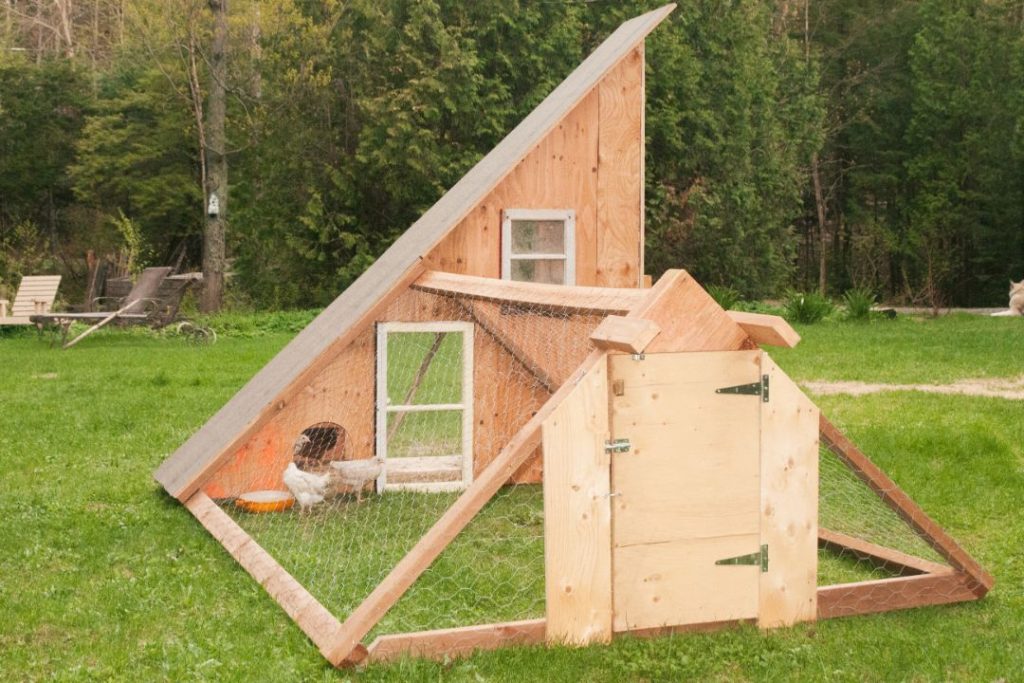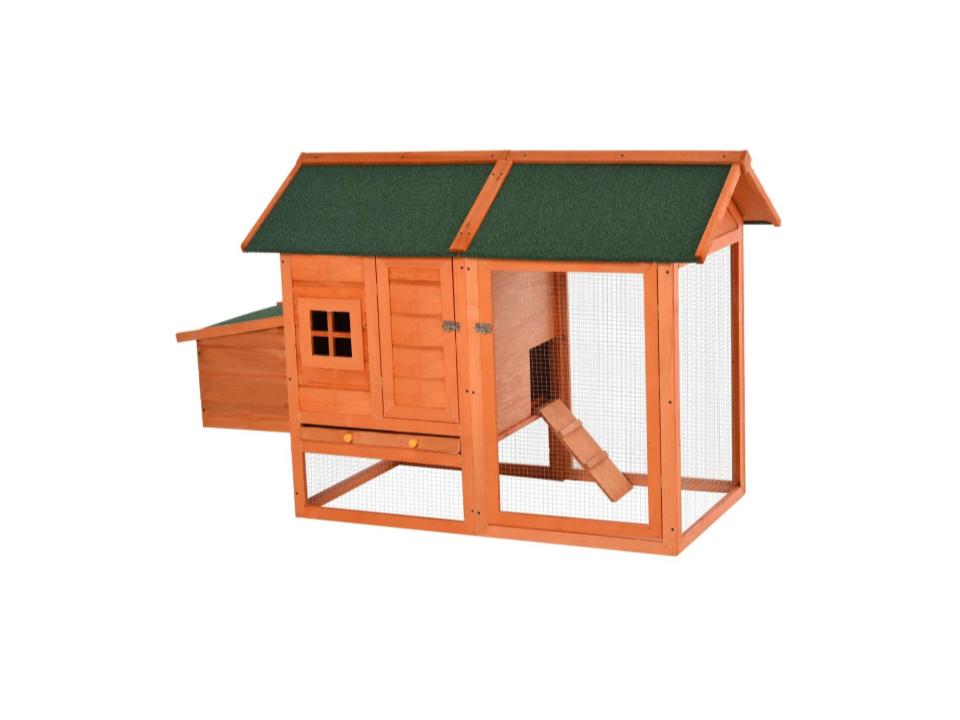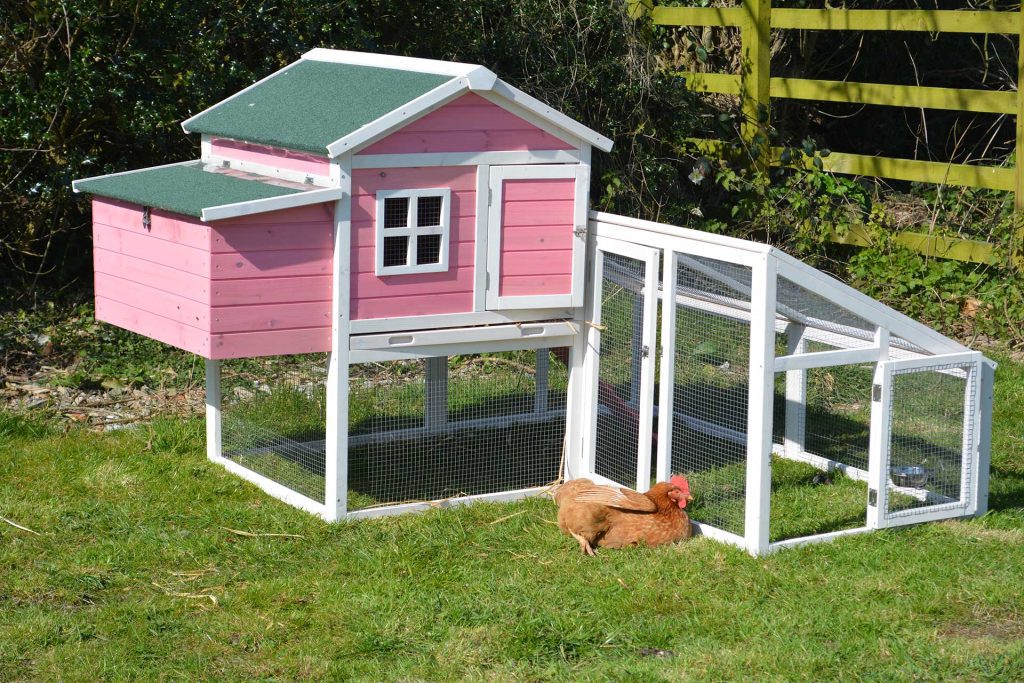Constructing a chicken coop out of the best materials should be the priority of every backyard chicken coop owner. A safe, strong, and well-made chicken coop is essential for your chicken’s perfect raising. Out there, different types of chicken coop materials are available. But not every material is suitable for building a coop.
The materials for the chicken coop are softwood, hardwood, metal, plywood, plastic, and concrete. You can build a coop for your chicken using any of these materials. But the problem is, every material isn’t equal. And they have particular pros and cons.
While selecting any materials from these options, you must ensure that it will keep your flock safe. You must choose a material that will ensure a long-lasting coop, keep your birds safe from predators, be easy to clean, and not harbor mice, lice, etc.
We conducted in-depth research on today’s topic and prepared this comprehensive guide. By going through it, you will learn what the materials are, how to choose the right one, and each floor material’s pros and cons. So without further ado, get going into the main discussion:
Why Choose The Right Chicken Coop Materials?
Choosing the best material for your chicken coop roof, walls, floor, run, and the fence is essential to ensure a long-lasting coop. Whether buying a coop or building a DIY chicken coop, its materials are the most important thing to focus on.
Building a coop using the right material will save money and time in the long run. However, selecting the right material is essential because of the following reasons:
- Coops build with the correct materials lasts for a long time
- Strong coop keeps your chickens safe from pests and predators
- The waterproof coop materials prevent the spreading of disease, and it’s easier to clean
- Well-built coop saves your money in the long run as it last for years
How To Choose The Right Chicken Coop Materials
There are several materials using which you can build your chicken coop. All materials have specific advantages and disadvantages.
Now we will disclose all those aspects considering which you can choose the right materials for your coop. So, let’s check out the following chicken coop materials list:
1. Softwood Chicken Coop
Most readymade coops sold online or in pet stores are made from softwood. The imported fir wood is one example of softwood. Softwood is light and cheap, and that is why it is a favorite material to the manufacturers.
But unfortunately, the softwood coop won’t last long. Treat your softwood coop with a non-toxic and high-quality sealant if you want to last them long. Within a few months, most softwoods will break bow or rot if it is exposed to rain or sun.
Even if you sealed the soft wood, within 3-5 years, you would need to replace them. Another problem with the softwood coop is that it tends to mites and lice harbor like the other woods. Water significantly damages the soft wood, so cleaning them is very difficult.
2. Hardwood Chicken Coop
Hardwood is the best choice if you want to build a long-lasting coop. Hardwood lasts for a long time. A well-built hardwood coop deters pests and predators also. But one pitfall with hardwood coops is that they harbor mites and lice in joins and cracks like the all-wooded coops.
Pros & Cons of Using Wood Chicken Coop Material
Whether you use softwood or hardwood in constructing your chicken coop, it has several benefits and disadvantages. Those are:
Pros:
- Pressure-treated wood that is injected with chemicals is waterproof and pest free.
- Woods at various budgets are available. So according to your choice or budget, you can select the right one.
- The wood is easy to customize in building a coop
- The rot-resistant wood ensures a hardy, long-lasting, and easy-to-maintain coop.
Cons:
- Some of the wood materials are expensive
- Wood requires enormous time and elbow grease to clean
- Wooden coops are wood parasites and termite infestations prone unless you treat your coop and make it pest free.
- To prevent rot, you need to treat your wood coop.
3. Metal Chicken Coops
To build a long-lasting and sturdy coop, you shouldn’t have a second choice other than metal coops. The metal coop provides the best protection for your chicken against pests and predators. You can build your coop with metal material as it is easy to clean.
Metal coops usually don’t harbor mites, lice, or disease. Metal material is hard to damage. And it is rust-resistant. You can easily find the parts that you require to build this coop. Chicken coop made of metal is reliably stable and robust and doesn’t collapse under bad weather.
Metal coops are great to protect your chickens from predators and bad weather. For your coop’s sheet roofing material, metal is the best option.
The noteworthy pros and cons of metal are:
Pros:
- Generally, metal is weatherproof
- Metal is a solid material
- 100% recyclable
- The metal sheet roofing is everlasting
- Fireproof
Cons:
- Metal has sharp edges that can cause injury to your chicken
- It requires protective gear and special tools
- The initial coop construction cost is high
4. Plywood Chicken Coops
Plywood is another common material for building your chicken coop. Softwood and plywood has the same problem, but it won’t last long. The plywood chicken coop degrades or gets damaged in the weather until it is treated with a non-toxic sealant.
But the high-grade marine ply lasts long compared to normal plywood. The washing or cleaning of the plywood coop is also tough. Moreover, it is more likely to harbor disease and parasites.
5. Plastic Chicken Coops
Plastic is the cheapest material for building your chicken coop. It is a long-lasting material and the easiest to maintain. Undoubtedly, it is a good material for use in your chicken coop, nesting boxes and droppings boards.
Plastic chicken coop’s one benefit is that it’s easy to clean. And usually, it doesn’t harbor mites and lice. Different readymade plastic chicken coops are available in the market. These coops come in different designs and sizes. Plastic provides enough safety to your chickens from cold weather and winds.
Moreover, this material won’t rot under sweltering temperatures, unlike wood. Most importantly, the opaque plastic blocks the soaking of direct UV rays. Before choosing this material for the chicken coop constructions, consider its pros and cons.
Pros:
- Cost-effective or economically priced
- Easy to maintain and clean
- Water-resistant and UV rays resistant
- Easy to portable due to its lightweight
Cons:
- Compared to wood, the plastic coop is less customizable
- During sunny weather, the plastic coop becomes very hot and creates an uncomfortable situation for your chicken
6. Concrete Coop Floors
Concrete or cement is an excellent option for building a solid chicken coop floor. Both these materials keep your chicken safe from predators.
Also, using a hose and broom, you can easily clean the coop’s floor. Furthermore, ice and mites can’t make a hole or crack in the concrete or cement floor.
You may also like to read: How Often To Change Straw In Chicken Coop?
Why Do You Need To Use Sealants, Paints And Treated Timber with Chicken Coop Materials?
Metal coop is solid and safe. But most wooden, softwood, and plywood don’t function or last long. For this reason, the coop built out of these materials, except the metal coop, can’t protect your flock from weather and insects.
So it’s obvious to protect your coop built out of these materials from damage. A good option is to use sealants, paints, and treated timber in your coop to prevent damage. You can prevent hardwood and pine material damage by treating it with heavy metals and chemicals.
Also, you can paint or seal the softwood, for example, fir wood. However, while using the paints, remember that not every sealants, paints, or treatments are useable in your chicken coop. Some may adversely affect your chicken’s health and may be toxic to them.
Sometimes your chicken can absorb these paints or sealants and passed on to their eggs. Dangerous chemicals can leach out from the treated timber, and the paints can flake.
The dangerous point is your chicken will peck at everything as they are curious. So we recommend you carefully research about your coop’s timber before choosing to use it. Then choose a treatment and ensure all the sealants and paints are non-toxic.
The Best Materials For Chicken Coop Floor?
The floor, roof, and side walls are all crucial parts of your chicken coop. Now let’s talk about the coop’s floor. Building the floor with the correct material is essential to keep your flock safe from adverse weather, mice, lice, predators, etc.
Out there in the market, many options are available. Some floor materials are very good at saving your birds from predators. In contrast, the other materials are easy to build and clean. Sometimes popular materials can be very toxic for your birds.
So from all these available options choosing the right material for your chicken’s floor is essential. Now let’s learn about different types of flooring materials with their pros and cons.
1. Concrete Floor
Concrete is a popular and safe flooring choice because it keeps predators out. Once the concrete installation is done, its maintenance cost is also low. Most importantly, like the wood, the concrete floor won’t root. Without any damage, your coop’s concrete floor will last long.
Now before choosing the concrete floor materials for your coop, consider its following pros and cons:
Pros:
- Long-lasting and durable
- Easy to disinfect and clean
- Cooler in warm weather
- Low maintenance
- Keeps out the predators and rodents
Cons:
- Sometimes expensive
- Colder in cold weather
- It can cause injury to your chicken sometimes
- May have gaps between the wall and the concrete of the coop
- The concrete floor can crack on the unstable soils
2. Wire Floors
Before discussing the details, one crucial question is can your chicken’s coop have a wire floor? The answer is yes. Your chicken coop can have a wire floor. But you must consider solid wire to build this type of floor.
A floor made out of weak wire fails to protect your chicken from predators. Moreover, sometimes the wire floor coop can be detrimental to your chicken. Whether you should choose the wire floor material or not, the following pros and cons will help you to make that decision:
Pros:
- Protection from the harmful predators
- No bedding is required
- Cooler in warm weather
- Through the flooring, the droppings can fall
- Theoretically, it’s easy to clean
- Added ventilation for elevated coop
Cons:
- Chicken droppings can get stuck within the wire
- Too cold and drafty coop in winter
- Cleaning may be hard
- During cold weather, the coop becomes too moist
- Wire can cause injury to your bird’s legs and feet
3. Wooden Board Floor
Many backyard chicken coop owners prefer wood board as the floor. The wooden board floor is tough to clean. Before using it, you must thoroughly clean this board floor. Once the debris gets stuck in the floor, you must use a pressure washer to clean all this debris.
The followings are the benefits and disadvantages of wooden board floors that will help you to make decisions regarding this material.
Pros:
- Cost-effective or affordable
- Readily available
- Easy to build
Cons:
- Once the bedding and dropping get stuck under or in between the boards, it becomes difficult to clean
- Over time the board can rot
- Predators can get into the coop due to the wooden board floor’s too-wide space
4. Plywood Floor Material
The plywood floor is one of the standard types of flooring options. It is a durable and safe floor choice for your chicken. If you use bedding, then cleaning the plywood floor is very easy.
Simply with the beddings, remove your chicken’s droppings. However, the pros and cons of plywood floors are the following:
Pros:
- Affordable material
- Readily available
- Easy to build, clean, and maintain
- Keep the rodents and predators out
Cons:
- Over time plywood can get damaged or rot
- If you don’t use the bedding, it’s tough to clean
5. Painted Coop Floor
You will get all the benefits in a plywood or painted wood floor like a wood floor. But one additional advantage of this flooring type is it prevents wood rot by providing added protection. However, this painted coop floor isn’t recommended for those who are using bedding in their coop.
Also Read: The Ultimate Chicken Coop Maintenance Checklist: Monthly, Quarterly, And Annual Tasks
6. Vinyl And Linoleum Chicken Coop Floor
The Linoleum floor covering is another option to use in your chicken coop. It is made of materials like pine rosin, linseed oil, wood flour, and ground cork dust.
Also, the Linoleum is made of different mineral fillers like calcium carbonate. On the other hand, modern vinyl floor tiles are composed of colored polyvinyl chloride chips.
It is another floor material option, but the vinyl flooring isn’t safe for your chickens. Now check out the pros and cons of this floor material type:
Pros:
- Durable
- Prevent the wood rot
- Some types are affordable and cost-effective
- Easy to disinfect and clean
Cons:
- Some types won’t last long
- Slippery and can cause injury to your birds
- Good quality materials are expensive
- Vinyl is toxic for your birds
7. Rubber Mat Floor Material
The backyard chicken keepers prefer to use rubber mats on their coop’s floor to protect it from moisture. Unique rubber mats are available in the market, especially for chickens. Bedding is highly recommended if you use the rubber mat on the floor.
Now let’s see what benefits and disadvantages these floor materials offer:
Pros:
- Easy to remove, rinse, hose off, and sun dry. Overall easy to clean
- Add a little padding to your coop’s floor
- Naturally, stick to the floor without stapling or adhesive
- Not slippery
Cons:
- Initially, it can be expensive
We have discussed all the best materials for your chicken coop floor. Now considering each material’s pros and cons, build your coop’s floor using the right one.
Also Read: How Often To Change Pine Shavings In Chicken Coop?
Conclusion
And that’s the end! We’ve already discussed all the chicken coop materials types. Now you have clear insights into choosing the right materials for a long-lasting, easy-to-maintain chicken coop. Different types of chicken coop materials are available, so do a little research before choosing one.
Learn all the advantages and disadvantages of each material. And then carefully select a material that will ensure an easy-to-maintain and long-lasting coop. You can comment if you need further guidance about any materials we discussed above. Soon we will reply to your query.



